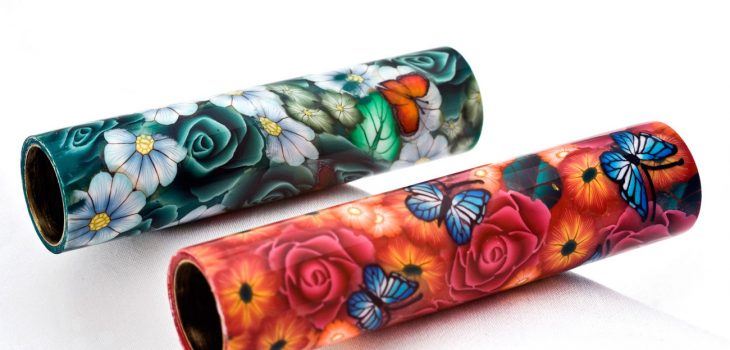
Assembly info
There are 10 alignment points for a fountain pen and a few less (5 total) for a rollerball.
1) Nib to blank pattern, There is a top and a bottom, mostly related to pattern. This matches the color and plating of the nib to the blank or certain area/spots on the blank.
2) Nib to clip when posted. To write comfortably the clip should be alined with the nib.
3) Nib to clip when capped. This is mostly a reference point so you can look at the pen and know where and how the nib is facing.
4) Upper barrel pattern to lower barrel pattern when posted. Most cases you will want the images to line up either when posted or when capped. The choice is up to you. The decision should be based on visual appeal.
5) Upper barrel pattern to lower barrel pattern when capped. The design flow does not stop at a single tube but extend beyond that into the lower tube. Assuming of course that the kit in question has two tubes.
6) Clip to upper and lower barrel pattern. It is a tendency for many makers to hide flaws or weak areas or undesirable spots under the clip.
7) Finial pattern to nib. This is the pattern in the end of the pen, both ends to be exact. Some kits have them and others does not. Some they are directional and others not so much.
8) Finial pattern to blank pattern. Again this is with flow, visual aestetic flow takes all the areas into account and makes them work together, never against each other.
9) End cap pattern to nib. Same as #8 but on the other end of the pen, same issue. The lower tube you align the rear finial to the nib, directional makes all the difference in the world.
10) End cap pattern to blank pattern. Same as above.
The general rule of thumb is the most visible striking section you want towards the viewer. The least desirable you want in the rear away from sight so it can not be seen. Just because you may not see it does not mean that everyone will not see it. Many will see things and keep quiet while others will see things and say something. When it comes to buyers they can use these aspects against you and you lost the sale due to not paying attention to the finer details.

Trouble shooting
- White spots form in the CA coating: To much moisture when the CA was being put down, either on the material, on your FINGERS/towel or in the blank.
- Grey spots form in the CA. I am still looking into this problem. So far I know it is not moisture, possible inclusions, i.e. foreign objects, grease, oils.
- Cracks form after few hours of applying the coating: The CA cured to fast and to hot causing it to become very brittle. Tension on the glue is not even between next to the blank material and on the surface of the CA, one side moves faster than the other causing the CA to shift.
- Cracks form after a few weeks/months of applying the coating: The CA is too brittle, the crack formed because the blank shifted due to various reasons (temperature, moisture, shock, stress, etc). The stress can be greatly reduced by using a flexible CA, also by better blank preparation.
- CA does not stick to some areas: CA will not stick to Teflon, PTFE, grease, oils and the like. Many shops contain all of these and blank preparation and cleanliness is a key critical aspect.
- Bald spots in the finish: Either over sanded or under coated. Re-apply a filler coat.
- Pits in the finish: This is because the filler coat is too thin. Add more CA to fill those low spots. Try using a thicker CA. The thicker the CA the more it will fill these areas. Thin CA does a poor job at filling but a very good job at sealing.
1 COMMENT
Wondering if you have or willing to make a blank highlighting daises with a brit yellow background. If so what would be required amount and cost?